Are you looking to boost your website’s search engine rankings and drive more organic traffic? Enter the world of SEO silo structure.
This powerful technique organizes your website content into distinct categories, enhancing its visibility and relevance.
Implementing an SEO silo structure can unlock the potential for higher rankings and increased visibility in search results. But it doesn’t stop there – this strategic approach also improves user experience by creating a logical flow that keeps visitors engaged.
Ready to learn more about this game-changing approach? Let’s dive in!
- What is SEO Silos?
- 9 Benefits and Advantages of SEO Silos
- Implementing an Effective SEO Silo Structure
- Breaking the Topic into Supporting Pages, Strategies for Further SEO Siloing
- Breaking Subtopics into Long-tail Keyword Phrases, Expanding SEO Siloing Efforts
- Improving the Flow of PageRank with SEO Silos
- Enhancing User Experience with SEO Silos, Starting with Effective Keyword Research
- Linking Strategies for SEO Silos
- Maintaining Linking to Main Category Pages, Longevity of SEO Silos
- Measuring Content Performance and Competitive Research for SEO Silos
- Additional FAQs on SEO Silos
- Conclusion: The Power of SEO Silos
What is SEO Silos?
SEO silos are a structural approach to organizing and optimizing website content for search engine optimization (SEO) purposes. It involves grouping related content together within a website to create a clear and logical hierarchy.
The idea behind SEO silos is to establish topical relevance and authority within specific areas of a website, making it easier for search engines to understand and rank the content.
In simple terms, SEO silos are virtual folders or compartments that house content related to a specific topic or keyword.
By organizing content in this way, website owners can create a more focused and coherent user experience and improve their chances of ranking higher in search engine results pages (SERPs).
One of the main benefits of implementing SEO silos is that they help search engines understand the structure and relevance of a website.
By grouping related content together, search engines can easily identify the main topics and subtopics covered on a website, which can lead to higher rankings for relevant search queries.
Using SEO silos has the added benefit of enhancing user experience by simplifying navigation and facilitating the search for desired information.
When content is organized into logical categories, users can easily navigate between related topics and explore more in-depth information on a particular subject.
Overall, SEO silos are a valuable strategy for improving the visibility and relevance of a website in search engine results.
By organizing content into clearly defined categories, website owners can boost their chances of ranking higher for relevant keywords and provide a better user experience for their visitors.
9 Benefits and Advantages of SEO Silos
SEO silos are much more than a mere website organizational strategy. They represent a powerful tool in your SEO arsenal, empowering your website with enhanced user navigation, targeted keyword optimization, enriched internal linking, niche authority establishment, and more.
The compelling advantages of a well-structured silo strategy lay the groundwork for a high-performing website while simultaneously boosting search engine optimization efforts.
In the following section, we delve deeper into these benefits, shedding light on how SEO silos can dramatically improve your site’s performance.
Enhanced Website Navigation
SEO silos significantly improve website navigation by categorizing content into distinct, easily identifiable topics. This logical grouping not only makes it easier for users to find the exact information they need but also ensures a smoother, more intuitive browsing experience.
Improved navigation minimizes the likelihood of users leaving out of frustration, thereby reducing bounce rates and promoting user engagement.
Furthermore, a user-friendly site can significantly boost your chances of retaining visitors and converting them into loyal customers.

Optimized Keyword Targeting
In the realm of SEO, targeted keyword optimization is crucial. SEO silos facilitate this by enabling you to group related content together, allowing you to focus your optimization efforts on specific, relevant keywords for each silo.
This strategic approach provides search engines with a clearer understanding of the context and relevance of your content. It bolsters visibility in search results and helps drive more organic traffic to your site, thereby enhancing the effectiveness of your SEO efforts.
Boosted Internal Linking Opportunities
The hierarchical structure of SEO silos naturally promotes strategic internal linking between related pages within each silo. This structure not only enhances user navigation but also enables efficient distribution of PageRank across your site.
Google uses PageRank to understand the relative importance of different pages, so by leveraging internal links. You’re effectively directing them toward your most important content.
Improved internal linking also keeps visitors on your site for longer, increasing the likelihood of conversions.
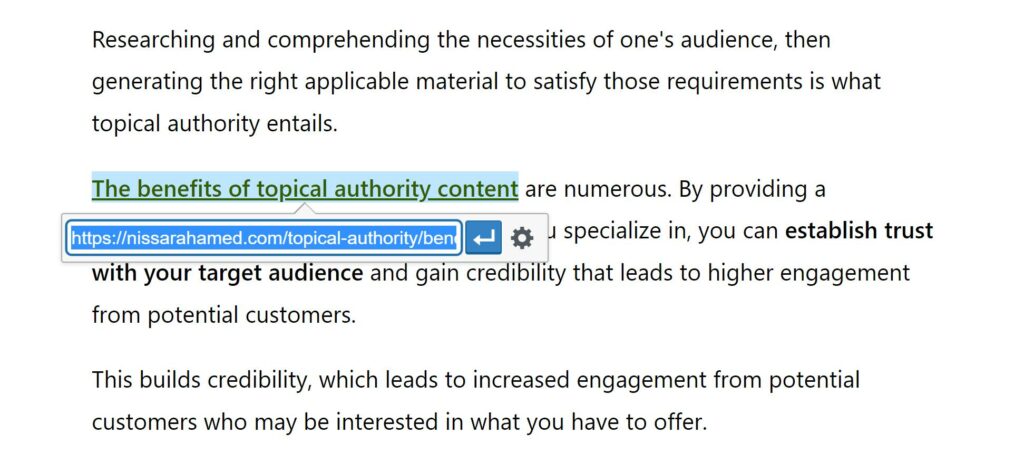
Authority Building in Your Niche
By creating a space for comprehensive, related content within a single silo, you demonstrate a depth of knowledge and expertise in your chosen areas. This adds credibility to your site and establishes you as an authority in your niche.
As you gain recognition as a trusted resource, you’ll likely see increased engagement and return visits from users.
Additionally, search engines are more likely to rank sites higher when they perceive them as authoritative, leading to increased visibility in search results.
Effective Long-Tail Keyword Targeting
Long-tail keywords, despite having lower search volumes, are often linked to high user intent and conversion potential.
SEO silos provide the opportunity to create dedicated content around these specific keywords, allowing you to tailor your content to the needs and queries of users searching for these terms.
By optimizing for long-tail keywords, you can capture highly targeted traffic, leading to an increased likelihood of conversions and a higher return on your SEO investment.
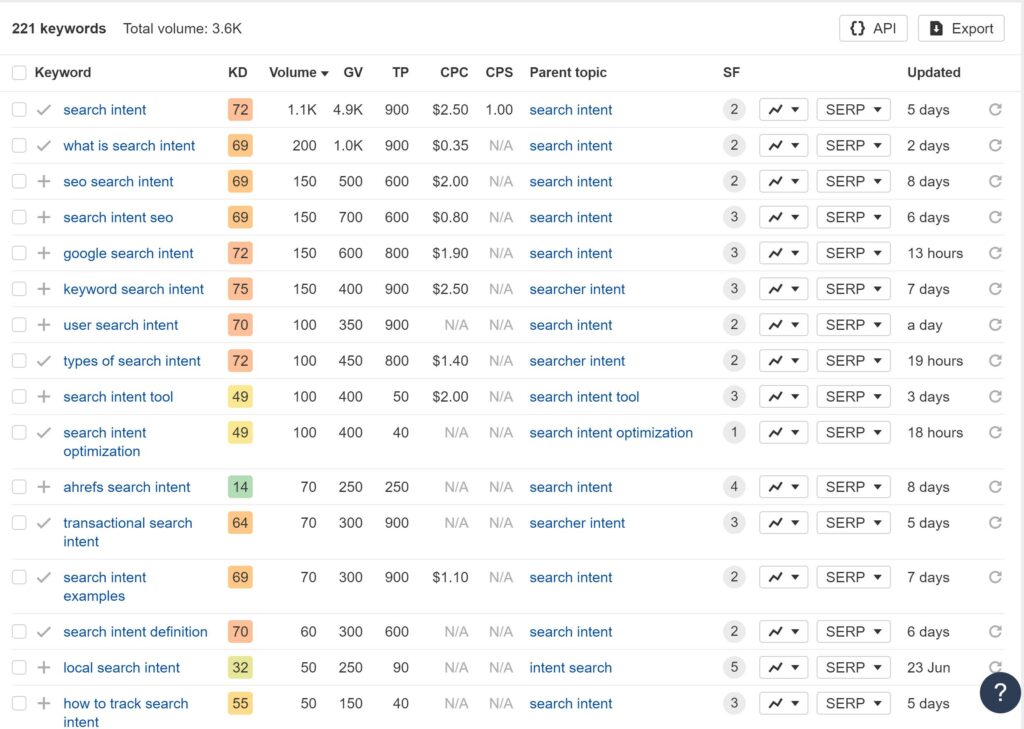
Improved Contextual Relevance for Search Engines
SEO silos enhance the contextual relevance of your content by providing clear signals to search engines about the topic and theme of each section of your website. This helps search engines accurately understand your content, making your site more likely to be ranked for relevant queries.
By improving the contextual relevance of your site, you are ensuring your content is surfaced to the right users at the right time, leading to an increase in organic traffic and potential conversions.
Higher Rankings for Siloed Websites
Websites with a well-structured silo architecture are likely to receive higher rankings from search engines.
When search engines encounter a site with well-organized content during the crawling and indexing process, they recognize the effort that has gone into structuring the site and are more likely to view the site as credible and authoritative. This increased authority can result in improved search engine rankings, leading to greater visibility and more organic traffic.
Enhanced Site Visibility through Internal Linking Strategy
Implementing an effective internal linking strategy within each silo can greatly enhance the visibility of your site.
Interlinking related articles or pages within the same silo creates a web of interconnected content that search engines can easily navigate. This network helps ensure that all relevant pages are discovered and indexed by search engines, improving the overall visibility of your site in search results and boosting organic traffic.
Increased Organic Traffic through Long-Tail Keywords
Dedicating content around specific long-tail keywords using SEO silos can significantly enhance your potential for attracting targeted organic traffic.
These queries often represent users who are further along in the buying cycle, and by addressing these specific needs and queries, you increase your chances of ranking higher for these long-tail queries. This approach can lead to increased organic traffic, higher conversion rates, and overall growth for your site.
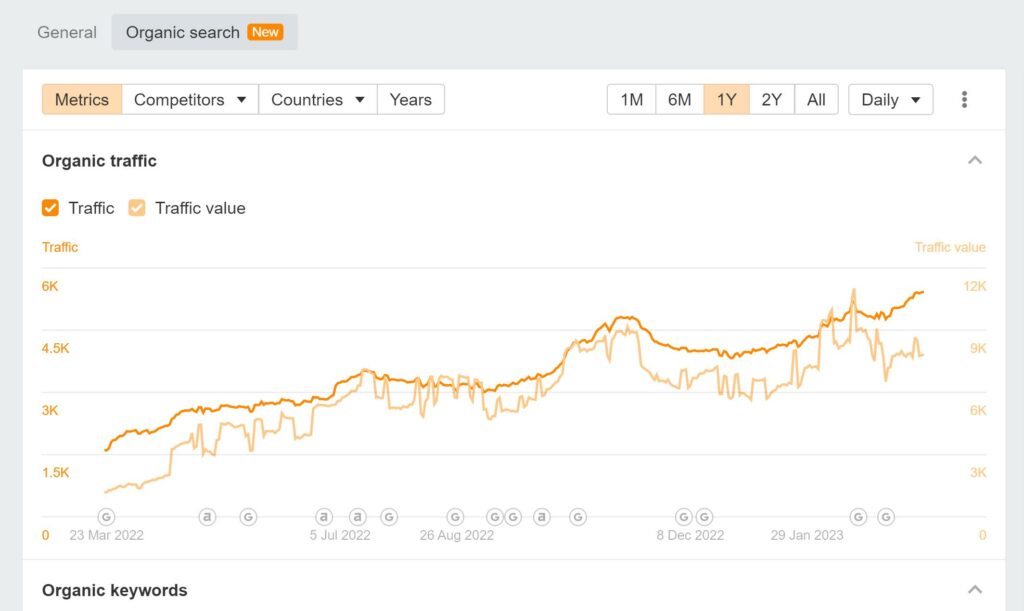
Implementing an Effective SEO Silo Structure
Implementing a well-structured SEO silo can significantly enhance your website’s visibility and improve its search engine rankings.
By organizing your content into distinct categories, you can create a hierarchical structure that helps search engines understand the relevance and relationship between different pages on your site.
Here are some key steps to follow when implementing an effective SEO silo structure.
Start by Identifying Main Categories or Themes that Represent Different Aspects of Your Website’s Topic.
First, analyze the main topics or themes encompassing your website’s subject matter. These should be broad categories that cover various aspects of your niche.
For example, if you have a website about fitness, possible main categories could include “nutrition,” “workouts,” and “equipment.” These categories will serve as the foundation for your silo structure.
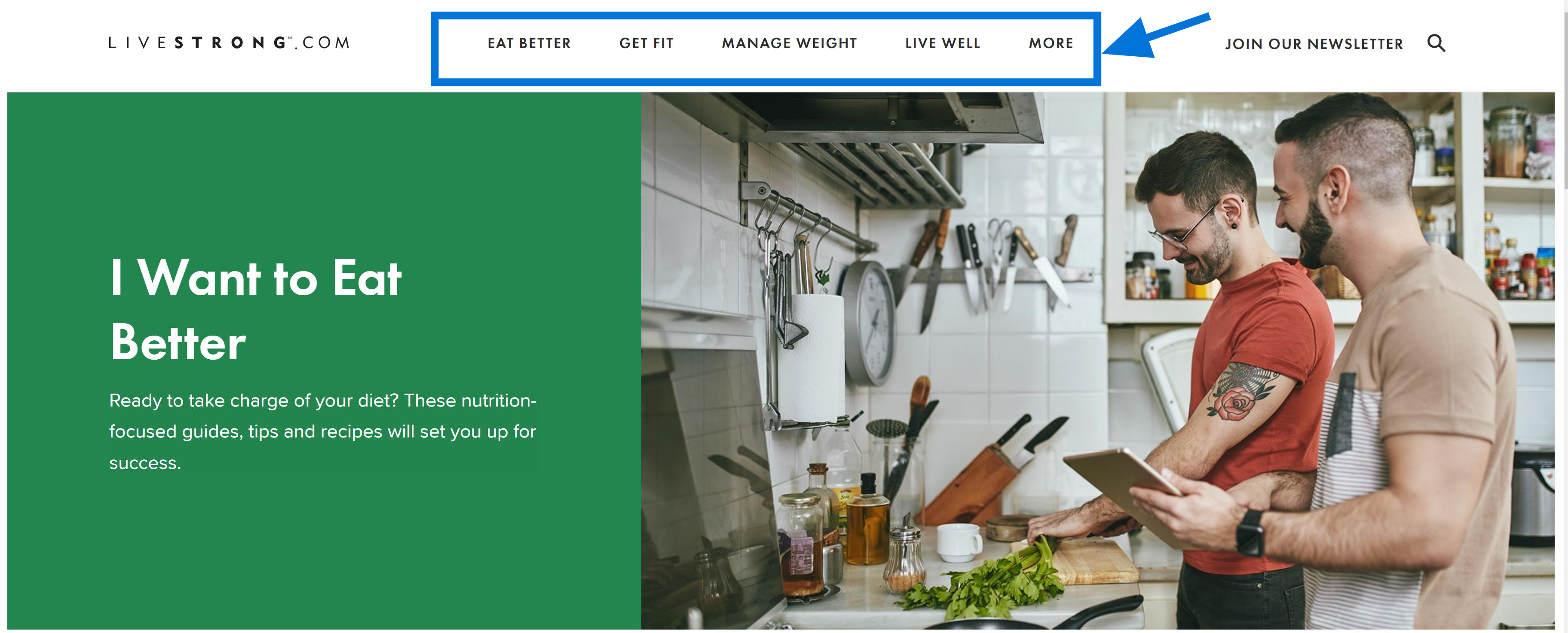
Create Separate Landing Pages for Each Category, Optimizing Them with Relevant Keywords and Meta Tags.
Once you’ve identified the main categories, it’s time to create dedicated landing pages for each one.
Each landing page should focus on a specific category and be optimized with relevant keywords related to that particular topic. This optimization ensures that search engines understand the purpose of each page and can rank them accordingly in search results.
For instance, if one of your main categories is “nutrition,” create a landing page specifically dedicated to providing valuable information about nutrition.
Optimize this page with keywords like “healthy eating,” “balanced diet,” and other related terms. Ensure that the meta tags accurately describe the content on each landing page to further improve their visibility in search results.
Group Supporting Subtopics Under Their Respective Main Categories, Ensuring Clear Organization and Hierarchy.
After creating the landing pages for your main categories, it’s time to organize supporting subtopics within these silos. Each subtopic should relate directly to its corresponding main category. This helps establish a clear hierarchy within your silo structure and allows search engines to understand the contextual relationship between different pages.
For example, under the “nutrition” category, you can have subtopics like “protein-rich foods,” “vitamin sources,” and “meal planning.”
By grouping these related subtopics together, you create a strong internal linking structure that reinforces the relevance of your content within each silo.
Use Breadcrumbs or Navigational Links to Guide Users Through the Different Levels of Your Silo Structure.
Consider implementing breadcrumbs or navigational links to enhance user experience and facilitate navigation throughout your silo structure. These elements provide clear pathways for users to navigate from one level of your silo structure to another.
Breadcrumbs are particularly effective in indicating the user’s current location within the hierarchy.
For instance, if a user is browsing a page about “protein-rich foods” under the “nutrition” category, breadcrumbs can display a trail like: Home > Nutrition > Protein-Rich Foods.
This helps users understand their position within your site’s hierarchical structure and enables easy navigation between related pages.
Breaking the Topic into Supporting Pages, Strategies for Further SEO Siloing
To effectively implement SEO silos on your website, it is essential to break down the main topic into supporting pages and employ strategies for further siloing.
By identifying subtopics related to each main category and creating individual pages within the appropriate silo, you can optimize your site structure for improved search engine visibility.
Here are some key strategies to consider:
Identify Subtopics Related to Each Main Category and Create Individual Pages for Them Within the Appropriate Silo.
When organizing your website content into SEO silos, it is crucial to identify subtopics that are closely related to each main category. These subtopics will serve as supporting pages within their respective silos.
For example, if your main category is “SEO Techniques,” potential subtopics could include “On-Page Optimization,” “Link Building Strategies,” and “Keyword Research Tips.”
Creating separate pages for these subtopics allows you to dive deeper into specific aspects of the main category while maintaining a clear organizational structure.
Each supporting page should focus on providing valuable and unique content that addresses a particular aspect of the broader topic.
Optimize These Supporting Pages with Targeted Keywords that Complement the Main Category’s Focus.
To enhance the visibility of your supporting pages within their respective silos, it is important to optimize them with targeted keywords that complement the main category’s focus.
Conduct keyword research to identify relevant terms and phrases that users might search when looking for information about the subtopic.
Integrate these keywords naturally throughout the content of each supporting page, including in headings, paragraphs, and image alt tags.
However, avoid keyword stuffing or over-optimization, as this can negatively impact user experience and search engine rankings.
Link These Supporting Pages Back to The Main Category Page to Reinforce the Silo Structure.
Linking your supporting pages back to the corresponding main category page helps reinforce the hierarchical structure of your SEO silos.
This internal linking strategy signals to search engines that the supporting pages are closely related to the main category, boosting their relevance and authority.
Include contextual anchor text within the content of your supporting pages that links back to the main category page.
For example, if you have a subtopic page about “On-Page Optimization” within the “SEO Techniques” silo, you could include a link with anchor text like “Learn more about SEO techniques” that directs users back to the main category page.
Ensure Each Supporting Page Provides Valuable and Unique Content to Engage Users.
While optimizing your supporting pages for SEO is important, ensuring they provide valuable and unique content that engages users is equally crucial.
High-quality content not only attracts visitors but also encourages them to spend more time on your site and explore other related pages.
Consider incorporating different types of media, such as images, videos, or infographics, to enhance the visual appeal of your supporting pages.
Aim to answer common questions or address specific pain points related to the subtopic in a comprehensive manner.
You can position yourself as a trusted expert in your field by sharing insightful tips and advice.
By breaking down your main topic into supporting pages within appropriate silos, optimizing them with targeted keywords, reinforcing the structure through internal linking, and providing valuable content for users, you can effectively implement SEO silos on your website.
Breaking Subtopics into Long-tail Keyword Phrases, Expanding SEO Siloing Efforts
Conduct keyword research to identify long-tail phrases that align with your subtopics.
To effectively expand your SEO siloing efforts, conducting thorough keyword research is crucial. This will enable you to identify long-tail keyword phrases that are highly relevant to the specific subtopics within your website.
By incorporating these targeted keywords into your content, you can enhance your chances of ranking higher in search engine results pages (SERPs).
Create dedicated pages for these long-tail keywords within their respective subtopic silos.
Once you have identified the appropriate long-tail keyword phrases, it’s essential to create dedicated pages specifically tailored to each of these keywords within their respective subtopic silos.
This approach allows you to provide focused and comprehensive information on a particular subject, making it easier for search engines and users alike to navigate and understand the content on your website.
Optimize these pages with relevant meta tags, headings, and high-quality content targeting the specific long-tail phrase.
To maximize the impact of your SEO siloing efforts, optimize each page by incorporating relevant meta tags, headings, and high-quality content that specifically targets the chosen long-tail phrase.
Meta tags provide search engines with valuable information about your page’s content, while headings help structure and organize the information for both search engines and readers.
Ensure the content is engaging and informative and provides value to visitors seeking information about the specific long-tail phrase.
Link back to the subtopic page from other related pages within the same silo.
Building internal links plays a vital role in reinforcing topical relevance within your website.
Once you have created dedicated pages for each long-tail keyword phrase under their respective subtopic silos, it is important to link back to these subtopic pages from other related pages within the same silo.
These internal links help search engines understand the hierarchy and interconnectedness of your content, further strengthening the overall theme and subject relevancy.
Following these steps and incorporating long-tail keyword phrases into your SEO siloing strategy can enhance your website’s visibility in search engine rankings.
Remember to conduct thorough keyword research, create dedicated pages within subtopic silos, optimize with relevant meta tags and headings, provide high-quality content targeting specific long-tail phrases, and build internal links for enhanced topical relevance.
Implementing these practices will contribute to a well-structured website that effectively targets various subtopics while improving overall SEO performance.
Improving the Flow of PageRank with SEO Silos
Silos play a crucial role in improving the flow of PageRank and enhancing the effectiveness of your SEO efforts.
By implementing silo structures, you can channel link equity within each category, resulting in better distribution of PageRank and improved rankings for your website.
Silos Help Distribute Page Rank More Effectively by Channeling Link Equity Within Each Category.
Silos are an invaluable tool. You create silo pages that serve as hubs for related information by organizing your content into distinct categories or topics. This enables search engines to understand the topical relevance of your content and distribute link equity more effectively within each category.
Internal Linking Between Pages Within a Silo Strengthens Topical Relevance and Improves Flow of Page Rank.
One of the key benefits of using silos is their ability to strengthen internal linking within a specific topic or category.
By strategically interlinking pages within a silo, you enhance the topical relevance of your content and improve the flow of PageRank throughout the category.
For example, if you have a silo dedicated to “Digital Marketing Strategies,” you can internally link relevant articles such as “Effective Social Media Marketing” or “Optimizing Landing Pages.”
This helps users navigate through related content and signals to search engines that these pages are interconnected and should be considered together when determining rankings.
By Focusing on Interlinking Within a Silo, You Can Prevent the Dilution of Authority Across Unrelated Topics or Categories.
Without proper organization, it’s easy for authority and ranking potential to become diluted across unrelated topics or categories on your website.
Silos help mitigate this issue by allowing you to focus on interlinking within each specific topic or category.
For instance, if your website covers various industries such as technology, fashion, and travel, creating separate silos for each industry ensures that authority and link equity are concentrated within their respective categories.
This prevents dilution and allows you to establish your website as an authoritative source within each specific niche.
Implementing a Hierarchical Linking Structure Ensures Important Pages Receive Maximum Link Juice.
In addition to organizing content into silos, implementing a hierarchical linking structure is crucial for optimizing the flow of PageRank.
By prioritizing internal links from high-authority pages to lower-level pages within a silo, you ensure that important pages receive maximum link juice.
For example, if you have a top-level page in your silo that covers the overarching topic, such as “Digital Marketing Strategies,” it should internally link to more specific sub-pages like “Content Marketing” or “Search Engine Optimization.”
This way, the authority and relevance of the top-level page are passed down to the lower-level pages, enhancing their ranking potential.
Enhancing User Experience with SEO Silos, Starting with Effective Keyword Research
Understanding user intent through keyword research helps create relevant content aligned with their needs.
One of the crucial aspects is understanding what users are looking for. By conducting thorough keyword research, you can gain valuable insights into user intent and tailor your content accordingly. This allows you to create relevant and valuable information that meets the specific needs of your target audience.
Organizing content into silos makes navigating and finding what they are looking for easier for users.
Imagine searching for a particular topic on a website only to be bombarded with unrelated information. It can be frustrating and time-consuming. That’s where SEO silos come in handy.
By organizing your website content into distinct silos based on related topics, you provide clear pathways for users to navigate through your site.
This logical organization ensures that visitors can easily find the information they are seeking without getting lost in a maze of irrelevant content.
By providing clear pathways and logical organization, users can easily explore related topics within each silo.
Within each silo, you have the opportunity to present a comprehensive range of information on a specific topic. This allows users to delve deeper into their area of interest without being overwhelmed by unrelated content.
For example, if your website focuses on fitness, you could have separate silos dedicated to nutrition, exercise routines, and weight loss tips. Users interested in nutrition can explore various subtopics, such as meal planning, healthy recipes, or dietary supplements within the nutrition silo.
Targeted keywords in each silo help attract qualified traffic interested in specific aspects of your topic.
Keywords play a vital role in attracting organic traffic from search engines like Google. By strategically incorporating targeted keywords within each silo’s content, you increase the likelihood of ranking higher in search results when users search for those specific terms or phrases.
For instance, if someone searches for “best exercises to lose belly fat,” having a silo dedicated to weight loss with relevant keywords can help your website appear in the search results. This targeted approach ensures that you attract qualified traffic interested in specific aspects of your topic.
Linking Strategies for SEO Silos
One crucial aspect to consider is the structure of your internal links. Internal linking plays a significant role in guiding both users and search engine crawlers through your website, improving its overall visibility and relevance.
Use Contextual Anchor Text within Silos
To reinforce topical relevance within a silo, it is essential to use contextual anchor text when linking between related pages.
Contextual anchor text refers to using descriptive keywords that accurately represent the content of the destination page. By doing so, you provide search engines with clear signals about the subject matter of each page within the silo.
For example:
- Instead of using generic anchor text like “click here” or “read more,” opt for specific phrases such as “best SEO practices” or “on-page optimization techniques.”
- Incorporate variations of target keywords into the anchor text to further strengthen the topical focus.
Employ Strategic Internal Links
Strategically placing internal links throughout your website helps guide users through different levels of your site’s hierarchy while effectively distributing link value.
By strategically interconnecting relevant pages within a silo, you enhance user experience and improve search engine crawlability.
Consider implementing the following tactics:
- Use breadcrumb navigation at the top of each page to provide clear hierarchical paths.
- Include related post suggestions at the end of articles or blog posts.
- Utilize sidebar or footer navigation menus as additional opportunities for internal linking between categories or sections of your site.
- Create hub pages that consolidate information on specific topics and link out to more detailed sub-pages within the same silo.
Regularly Audit and Update Internal Links
Maintaining an optimized link structure requires regular audits and updates to ensure all internal links remain relevant and functional over time.
Broken links or outdated anchor text can negatively impact user experience and hinder search engine crawlers from properly understanding your content.
Consider the following practices:
- Conduct periodic link audits using tools like Screaming Frog or Google Search Console to identify broken or redirected links.
- Update anchor text when necessary to reflect changes in target keywords or content updates.
- Remove or update internal links pointing to outdated, irrelevant, or low-quality pages.
Regularly auditing and updating your internal links ensures that users and search engines can navigate through your silos seamlessly.
Maintaining Linking to Main Category Pages, Longevity of SEO Silos
To ensure the effectiveness and longevity of your SEO silo structure, it is crucial to continuously monitor and maintain internal links pointing to the main category pages within each silo.
These category pages are the cornerstone of your website’s organization and are vital in improving search engine visibility.
Regularly updating the content within each silo is essential to keep it fresh and relevant.
By doing so, you encourage other websites to link back to your main category pages naturally. This not only boosts your site’s authority but also enhances its visibility in search engine results.
Implementing a proactive backlink acquisition strategy is another key aspect of maintaining the linking structure within your SEO silos.
Target high-quality external sites that are relevant to your niche or industry and seek opportunities for them to link back to your main category pages. This can be achieved through guest blogging, influencer collaborations, or partnerships with authoritative websites.
Consistently monitoring and improving the user experience within each silo is equally important for ensuring the longevity of your SEO silo structure.
User experience plays a significant role in search engine rankings, so optimizing navigation, page load speed, mobile responsiveness, and overall usability within each category is crucial.
By focusing on these aspects, you create an environment where users can easily navigate through related content within a specific category while also providing search engines with clear signals about the relevance and importance of these main category pages.
Here are some additional tips for maintaining linking structures in SEO silos:
- Interlinking: Ensure there are appropriate internal links between related posts or subcategories within a particular silo. This helps users discover more content while reinforcing the topical relevance of individual pages.
- Anchor Text Optimization: Use descriptive anchor text when linking from one page to another within a silo. This provides additional context for both users and search engines, reinforcing the relevance of the linked pages.
- Avoid Broken Links: Regularly check for broken links within your silo structure and promptly fix them. Broken links can negatively impact user experience and harm your site’s SEO efforts.
- Monitor External Links: Keep an eye on external websites that link to your main category pages. If any of these links break or become outdated, reach out to the website owners and request an update or replacement.
- Content Updates: Periodically review and update the content within each silo to ensure its accuracy, freshness, and relevancy. This not only helps maintain user interest but also signals search engines that your website is actively providing valuable information in a specific niche.
By following these guidelines and consistently monitoring and maintaining internal links pointing to main category pages within your SEO silos, you can enhance the effectiveness and longevity of your overall SEO strategy.
Remember, it’s not just about building silos but also nurturing them over time to achieve sustainable organic growth.
Measuring Content Performance and Competitive Research for SEO Silos
Tracking the performance of your SEO silos is essential to ensure that your efforts yield the desired results.
By monitoring key metrics such as organic traffic, rankings, bounce rate, and conversions for each siloed page, you can gain valuable insights into the effectiveness of your content strategy.
To begin with, it is crucial to analyze competitor websites that employ similar silo structures. This competitor analysis allows you to identify opportunities for improvement or differentiation within your own silos.
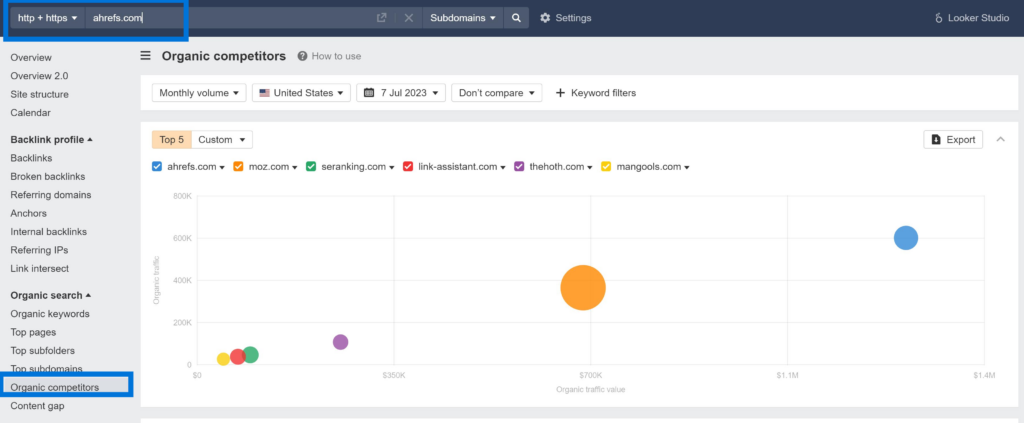
By studying their content and identifying gaps or areas where you can outperform them, you can gain a competitive edge in the search engine rankings.
Utilizing tools like Google Analytics and Search Console provides invaluable insights into how users interact with your siloed pages.
These tools offer data on user behavior, including time spent on-page, click-through rates, and conversion rates. By leveraging this information, you can make informed decisions about optimizing your content to better align with user preferences and improve overall engagement.

Regularly reviewing keyword rankings within each silo is another crucial aspect of measuring content performance.
By monitoring how well your target keywords are ranking in search engine results pages (SERPs), you can identify areas where further optimization is needed. This helps ensure that your content remains relevant and visible to potential visitors searching for related topics.
In addition to tracking metrics and optimizing individual siloed pages, it’s important to take a step back and assess the overall performance of your SEO silos as a whole.
A research summary tool can be immensely helpful in providing an overview of key statistics across all silos. This tool consolidates data from various sources, allowing you to identify trends and patterns in performance easily.
When evaluating the success of your SEO silos, keep in mind that content plays a vital role. High-quality content that effectively addresses user intent will attract more organic traffic and increase engagement and conversions.
Therefore, it is essential to regularly audit and update your content to ensure its relevance and effectiveness.
To summarize, measuring the performance of your SEO silos involves tracking key metrics, analyzing competitor websites, utilizing tools like Google Analytics and Search Console, regularly reviewing keyword rankings, and assessing overall performance using a research summary tool.
By implementing these strategies, you can optimize your siloed pages for better search engine visibility, user engagement and ultimately drive more conversions.
Additional FAQs on SEO Silos
How Long Does It Take to See Results from Implementing SEO Silos?
The timeline for seeing results from SEO silos varies depending on various factors, such as keywords’ competitiveness, content quality, and overall optimization efforts.
However, with consistent implementation and monitoring, you can start noticing improvements within a few weeks or months.
Can I Implement SEO Silos on An Existing Website?
Absolutely!
You can implement SEO silos on an existing website by restructuring your content into relevant categories and optimizing internal linking accordingly.
However, it is important to ensure that you redirect any old URLs to maintain organic rankings during the transition.
Are There Any Specific Tools or Software that Can Assist in Implementing Seo Silos?
While there are several tools available for keyword research and content analysis that can aid in implementing SEO silos, they are not mandatory.
Tools like Google Keyword Planner, SEMrush, or Ahrefs can provide valuable insights, but manual research and analysis can also be effective.
Should I Focus Solely on Creating New Content for Each Siloed Category?
While creating fresh content is important for each category within your SEO silo structure, it is equally crucial to optimize existing content.
By updating and improving older articles or pages with targeted keywords and internal links related to their respective categories, you maximize their potential within the silo structure.
Is It Necessary to Hire an SEO Professional to Implement Seo Silos Effectively?
Hiring an experienced SEO professional can certainly expedite the process of implementing effective SEO silos.
However, with proper research and an understanding of the best practices outlined in this guide, you can implement SEO silos on your own. It may require some time and effort, but the results can be rewarding.
Conclusion: The Power of SEO Silos
To sum up, utilizing SEO silos can greatly improve the search engine optimization of your website.
By structuring your content in a hierarchical manner and organizing it into relevant categories, you can enhance the visibility and effectiveness of your website.
One of the key benefits of SEO silos is that they allow you to target specific keywords and topics more effectively.
By breaking down your content into supporting pages and long-tail keyword phrases, you can expand your SEO efforts and improve the flow of PageRank throughout your site. This not only helps search engines understand the relevance and context of your content but also enhances the user experience.
Effective keyword research plays a crucial role in optimizing SEO silos.
By starting with thorough keyword analysis, you can identify high-value terms that align with user intent and incorporate them strategically within each siloed category. This ensures that your content is not only engaging but also highly visible to potential visitors.
Linking strategies are vital for maximizing the power of SEO silos.
By maintaining internal links to main category pages, you create a strong network within your website that boosts both user navigation and search engine crawlability. This longevity further strengthens the authority and relevance of each siloed section.
Measuring content performance is essential in understanding how well your SEO silos are performing.
Regularly analyzing metrics such as organic traffic, bounce rates, and conversions allows you to identify areas for improvement and refine your strategy accordingly.
Competitive research can also provide valuable insights into industry trends and help you stay ahead of the game.
To fully harness the power of SEO silos, take advantage of Google’s E-A-T concept (Expertise, Authoritativeness, Trustworthiness).
Ensure that your content demonstrates expertise in its respective field while establishing yourself as an authoritative figure through accurate information, examples, case studies, or social proofs where suitable.
In summary, by implementing effective SEO silo structures, conducting thorough keyword research, employing linking strategies, and measuring content performance, you can optimize your website’s visibility and improve user experience.
Embrace the power of SEO silos to enhance your online presence and drive organic traffic to your site.
